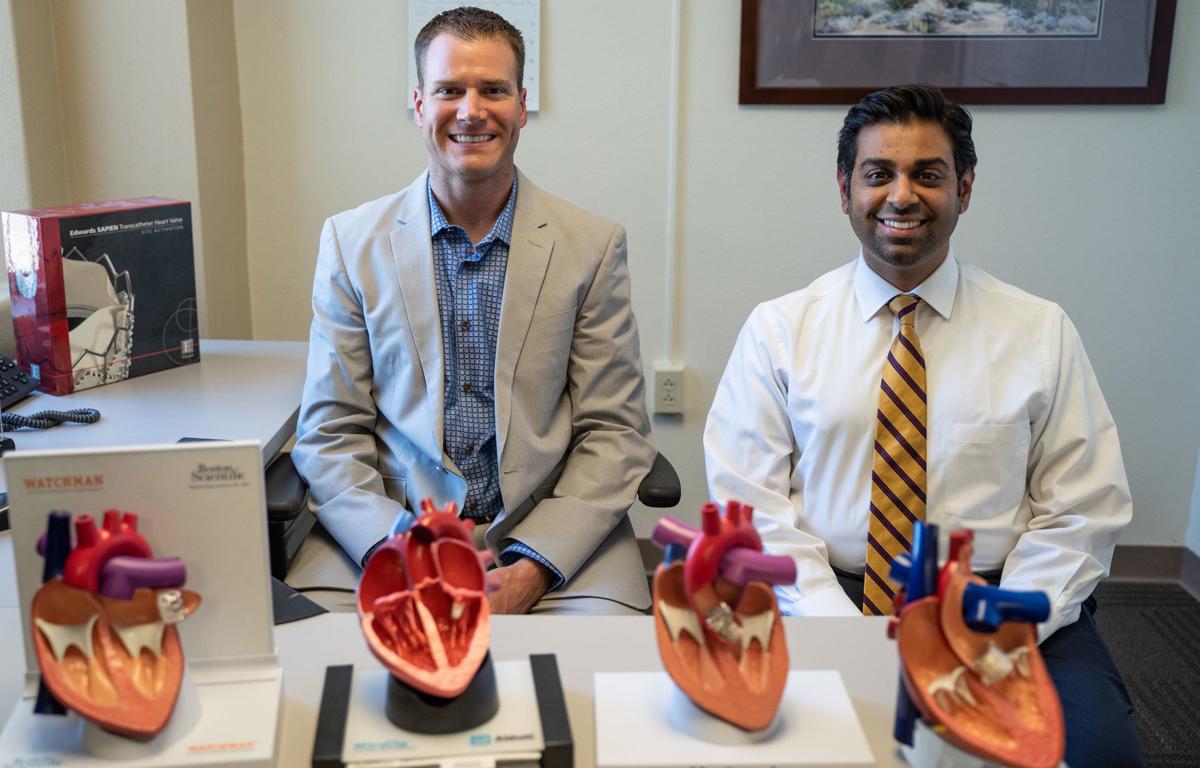For high-risk patients with heart complications, open-heart surgery isn’t always the safest option. Now, doctors at Tucson Medical Center are working to provide effective, and less invasive, alternatives.
TMC has performed over 400 minimally invasive aortic valve replacements to restore proper valve function in the heart. The procedure — called transcatheter aortic valve replacement — reduces the risk, pain and recovery time for the patient when compared to open-heart surgery, which is the typical way to replace a heart valve, but one that involves invasive surgery and a long recovery period.
The procedure, which was first developed in 2002, is typically performed through the femoral artery, but there are some patients who don’t qualify because of calcified arteries or other complications.
Because of this, doctors began to develop a new technique for patients who were high-risk or needed more options.
In April, TMC became the first hospital in Arizona and the Southwest to perform a minimally invasive aortic valve replacement via transcaval access using the femoral vein.
This new transcaval technique was developed by doctors at the Henry Ford Center for Structural Heart Disease in Detroit.
During the procedure, a wire is guided into the leg and up through the femoral vein, and a small puncture is made in the aorta, a large artery in the heart, which creates a temporary connection between these two major blood vessels. Once the connection is made, the wire continues into the heart to place the new valve, avoiding problematic arteries.
“It’s really exciting because the technology has kind of married with the science of cardiology,” said Dr. Thomas Waggoner, director of the TMC structural heart program. “Now, the technology is so good, we can actually make an even smaller tube in the groin to place the valve in the heart.”
Following its success with the aortic valve replacement procedure, the hospital is one of 10 facilities around the country to be among the first selected to offer a new type of aortic valve system to high-risk patients with severe aortic stenosis, one of the most common and most serious valve complications where the aortic valve narrows, restricting blood flow.
This new replacement valve — the Boston Scientific LOTUS Edge device — is repositionable, which allows physicians to place the valve in an optimal position within the heart. If they find that it isn’t functioning properly, they can go back in and adjust rather than replacing the valve all over again.
Waggoner said this repositionable valve conforms to the patient’s anatomy, essentially eliminating the risk of leaks. The new type of valve can be put in a patient using the minimally invasive replacement procedure.
“When you put the valve in, it’s like a frame or a foundation, much like a door in a door frame,” he said “So, the door itself we want to function well, obviously, but the second portion is we want to made sure there’s no leak between the door jam and the wall. That’s where this valve comes into play.”
According to TMC physicians, the minimally invasive aortic valve replacement provides patients with more options and a much shorter recovery time compared to open-heart surgery.
“What we really want to do is find the right option for the right patient,” said Dr. Neil Gheewala, a TMC cardiologist who specializes in heart-valve disorders. “It’s not one size fits all. I think, for us, personalizing medicine is the goal.”
TMC physicians expect that these minimally invasive procedures for valve replacements will become the new-normal treatment method.





